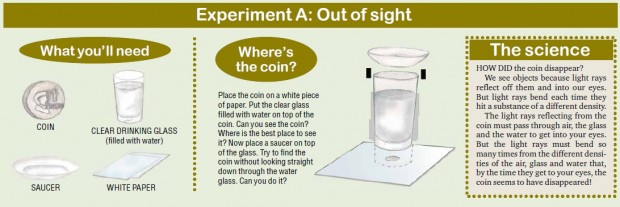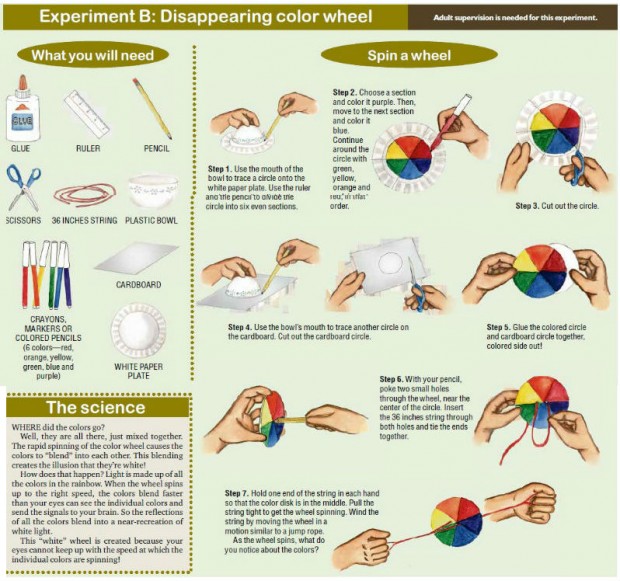Visual tricks
Your eyes are among the most fascinating and complex parts of your body.
They work like a camera, taking pictures of the world around you and sending these images to your brain. Your brain then processes the images so you can make sense of them or store them in your memory.
Like a camera, our eyes are light receivers. We see when light enters our eyes. The human eye sees only three colors: red, blue and green. All other colors you see are combinations of these colors.
Try these fun experiments to get a better idea about how our eyes can sometimes trick us.
About the series
The Bayer Smiling Kiddie Einsteins series offers students, teachers and even parents hands-on and inquiry-based experiences that involve observing, hypothesizing, analyzing and testing.
Through this series of experiments related to health, nutrition and nature, Bayer and Inquirer in Education aim to deepen the interest of elementary school pupils in Science.
The materials needed for these experiments are safe and can easily be accessed from your home.
Fun facts
A dragonfly has 30,000 lenses in its eyes, assisting them with motion detection and making them very difficult for predators to kill.
- Owls cannot move their eyes so they have to turn their heads almost all the way around.
- Dogs can’t distinguish between red and green.
Using the newspaper
Every day the Inquirer front page features a timely and provocative photograph that makes the paper more visually appealing.
Pictures are also printed on the inside pages. Read the captions of the photos. Important details in the news story are usually found in the captions.
Choose any photo from the Inquirer, cut it out, paste it on a sheet of paper and answer the following questions:
- What is happening in the photo?
- What might have happened just before it was taken?
- What is about to happen?

